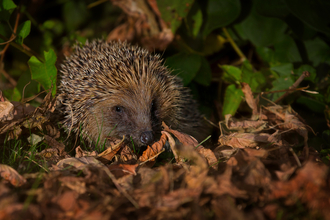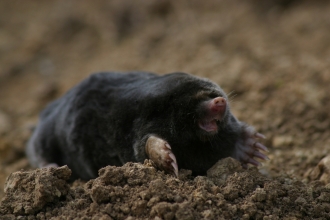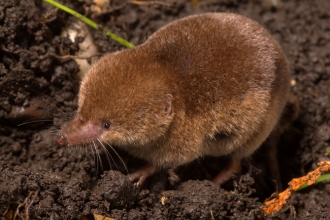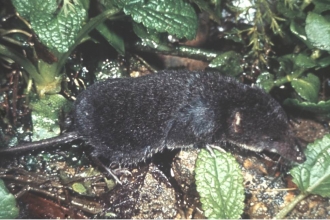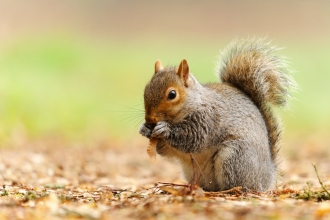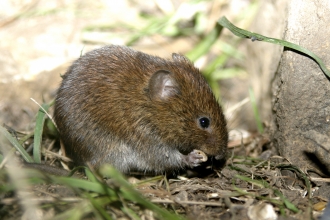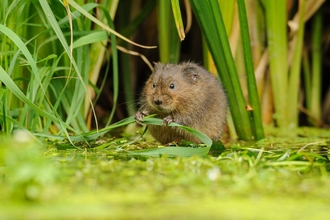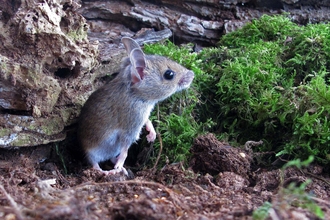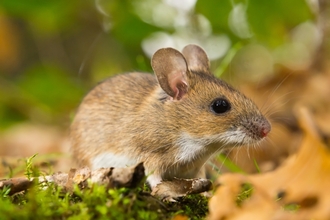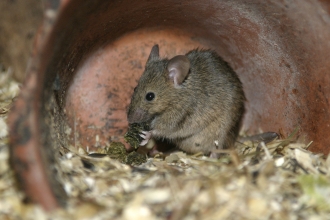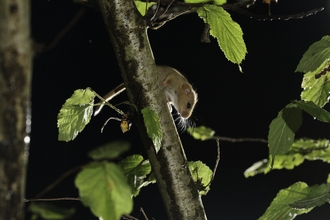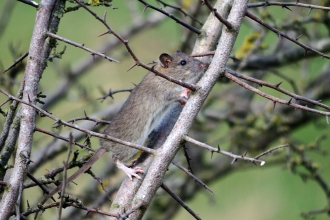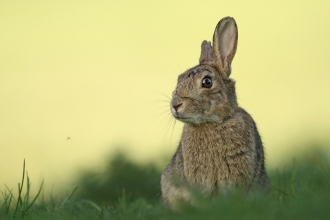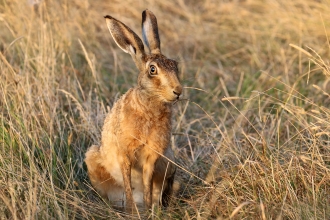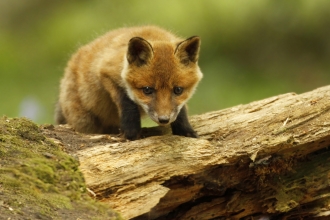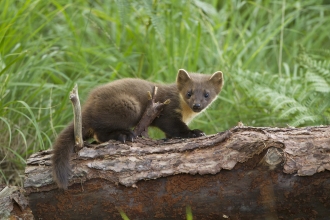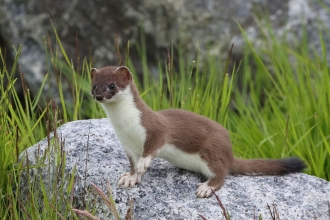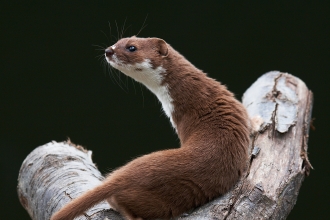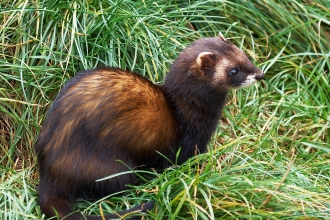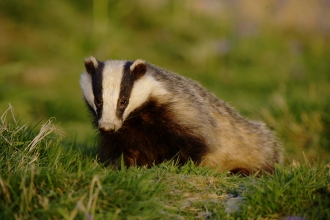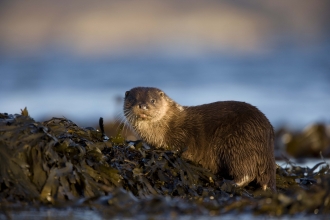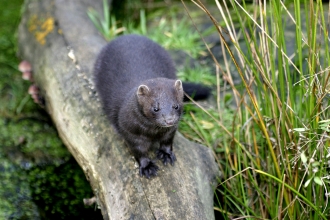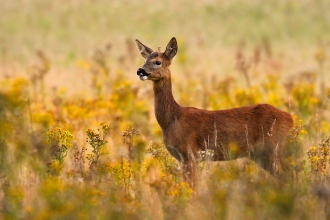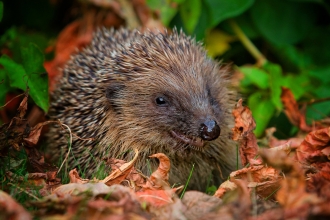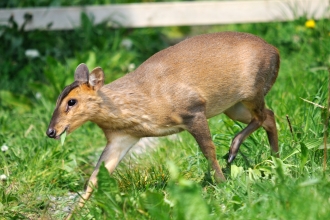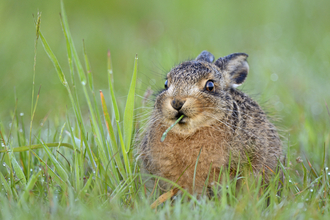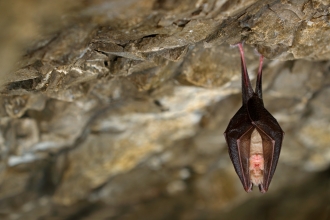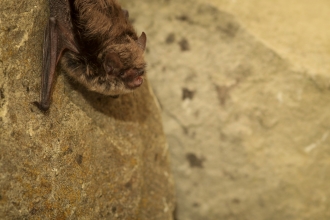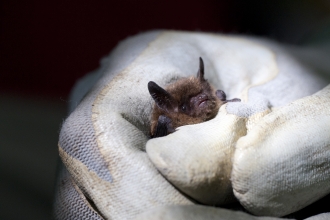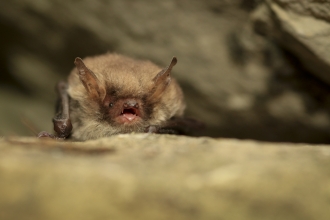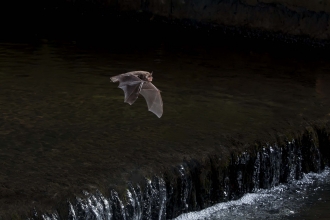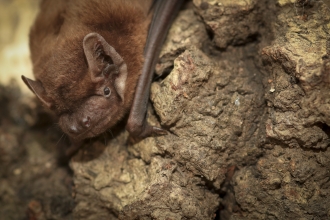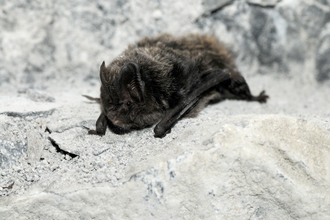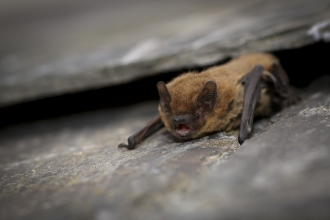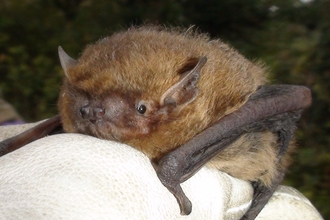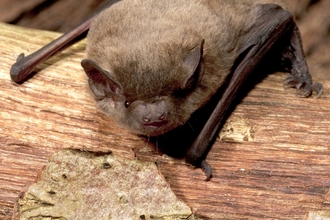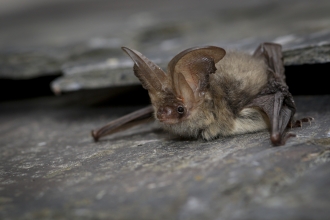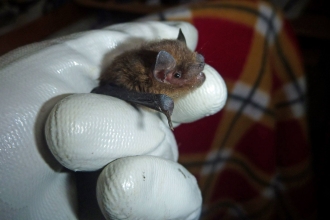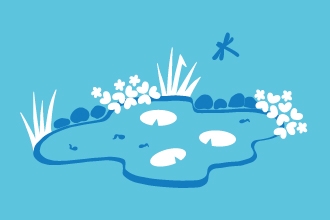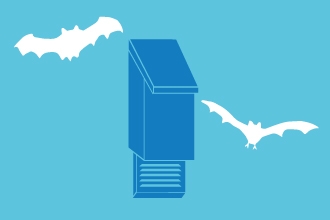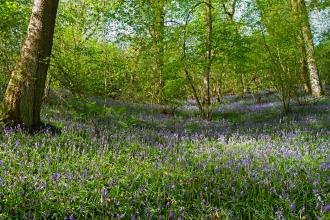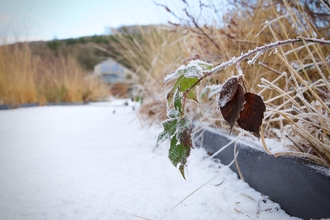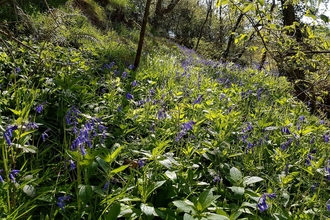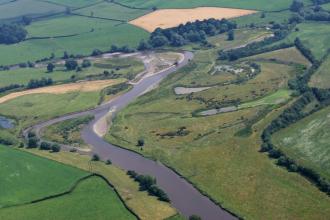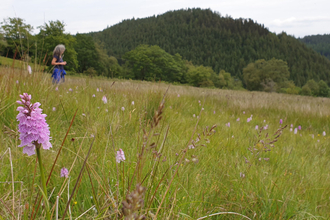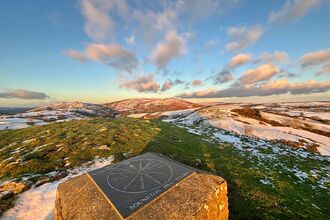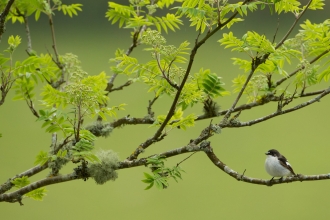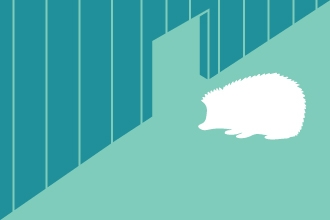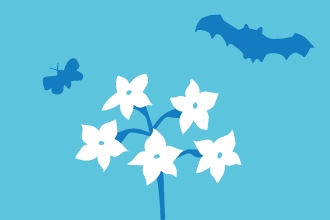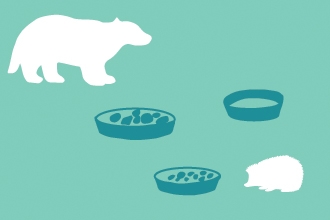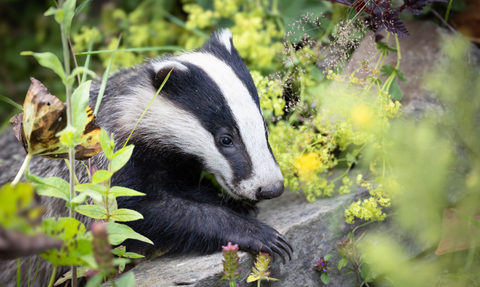
Photo: © Emyr Evans
Mammals of Montgomeryshire
Find out which mammal species call Montgomeryshire home
Many mammal species can be tricky to see, either because they come out at night and/or are very nervous of humans. As a consequence, a mammalogist is a sort of detective, often hunting for signs of mammals, rather than the animals themselves. Apart from Rabbit and Grey Squirrel, your sightings of mammals are likely to be limited to lucky fleeting glimpses. Nevertheless, our nature reserves can be a good place to look.
Otters are now much more common than they used to be, although never numerous and are still very hard to see. However, they have been seen at Llyn Coed y Dinas, Dolydd Hafren and Cors Dyfi and their signs are numerous on the Montgomery Canal. Polecats are also recovering and as this part of Wales was always a stronghold, they are also widespread. Although they remain rare, the Pine Marten is now making a comeback in Mid Wales, largely due to work by the Vincent Wildlife Trust and have been recorded in Montgomeryshire.
If you want to see Brown Hare, it is hard to beat Dolydd Hafren, which appears to provide exactly the sort of mixture of habitats they need to thrive. Hazel Dormice are widespread in the area, but never common and always elusive; they are known at our Coed Pendugwm, Cors Dyfi, Dolforwyn Woods and Dyfnant Meadows nature reserves. On the eastern side of the reserve, Yellow-necked Mice can be numerous, sometimes being encountered more often than the very similar and more widespread, Wood Mouse.
Sadly, two mammals which were once numerous in Montgomeryshire, are now very rare; Red Squirrel are now believed to be extinct in the area, whilst Water Voles are now absent from most of the area and may only be persisting in the uplands. Despite there being some good habitat around, Harvest Mice have never been recorded in the area.
42 mammal species have have been recorded in Montgomeryshire to date, of which 12 are bats. The area is particularly good for the rare Lesser Horseshoe Bat, which roosts in the mines at Roundton Hill in the winter.
Please do send your mammal sightings in, to help us understand these changes better.
Browse Montgomeryshire's terrestrial mammal species
Montgomeryshire's bats
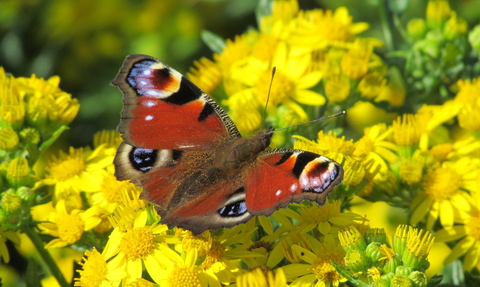
Peacock butterfly © David Hopley

